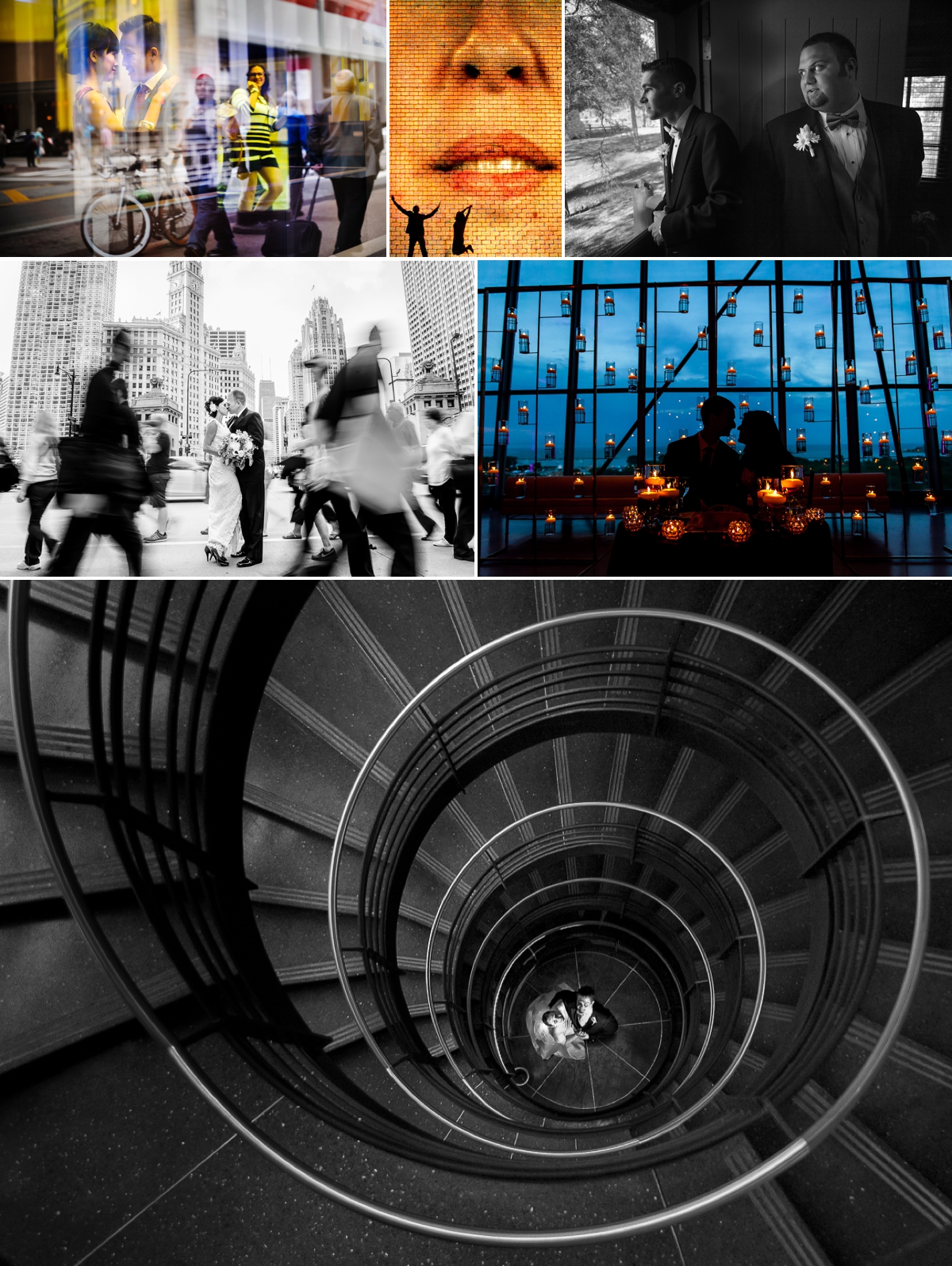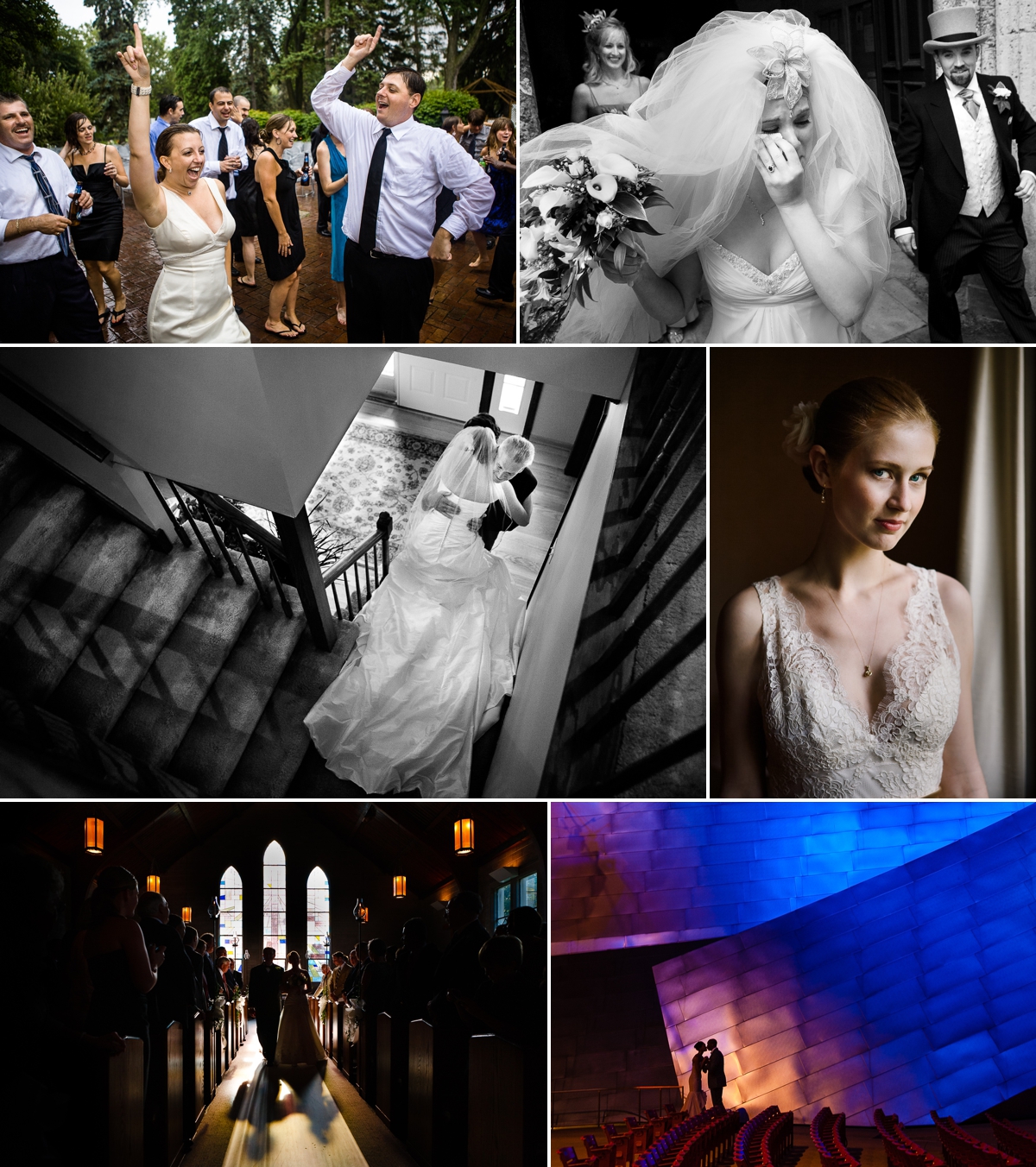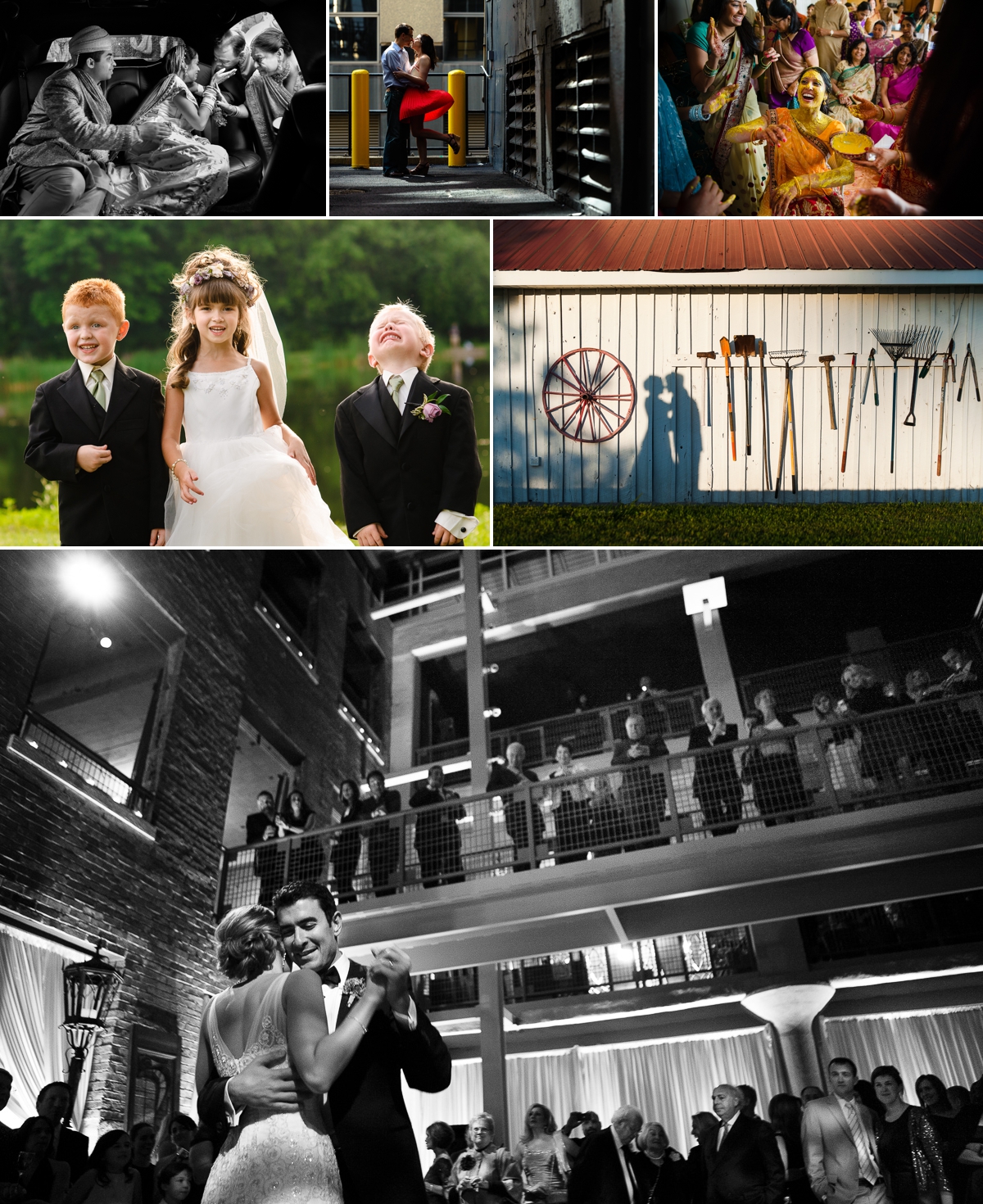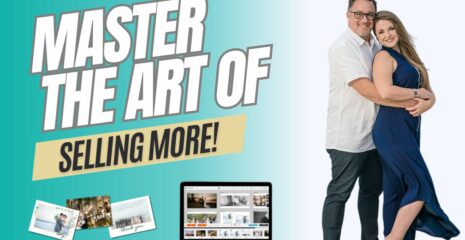Peter Pawinski of Pawinski Photography has a strong background in photojournalism, and approaches wedding photography as he would a documentary project – telling a story by capturing real moments, emotions and light.
How did you get started in photography?
It was a matter of serendipity. Basically, it started my sophomore year in college at Northwestern University, when I joined the photo department of my school newspaper, initially in the role of director of photography, mostly to manage staff, assignments, photo supplies (this was in the film days), and represent the photo department in editorial board meetings. There were a number of very talented photographers on our staff (who are still professional photographers today, despite the fact that my school did not have any photography degrees, maybe only a class or two) that I worked with closely. Through that first year of acting as director of photography, I slowly began to learn the craft, first learning the art of editing when the editors were unavailable, and then taking assignments myself when I was unable to find photographers to shoot stories. The chief photographers took me under their wing and taught me how to encapsulate a news story in a single image, how to tell a complete story through photographs, the importance of technically perfect photos, how to compose a impactful news image, how to print, etc.
I had always been interested in news and storytelling, but being put in this situation with access to talented photographers who could inspire me and teach the craft stirred an interest and passion in me for visual storytelling. After only a few months, I found myself part of the creative core of the newspaper, not only managing the photo department, but also contributing much imagery for the newspaper. I was hooked, and found myself spending far too much time taking photographs and living at the college paper (much to the detriment of my grades.) It was not unusual for me to enter the darkroom at 8 p.m. and get lost in a zen-like state printing until I could hear the birds chirping just before the crack of dawn.
Within a couple of years, I found myself taking on freelance assignments for AFP (Agence-France Presse) and finding a job immediately after graduating as the chief photographer at the Budapest Business Journal (an English-language business weekly in Budapest, Hungary.)
What do you love most about shooting weddings?
The biggest thing for me is that my photos have great meaning to my couples and will become a part of their family history. I know that all these photos will be cherished and important to many people. It is truly an honor and a privilege to know that I have been entrusted to document such a big event in my clients’ lives.
As a visual artist, weddings are a great exercise in sharpening many photographic skills: documentary photography, still lives, portraiture, architecture, landscape, etc. —a wedding offers opportunities to exercise a wide range of photographic muscles and makes you become a more well-rounded photographer. And, if you’re like me and like photographing feature stories, a wedding is a non-stop feature story with photographic moments happening constantly, with an audience who wants to be photographed and wants you to be there.
What the most important thing you’ve learned as a working photographer that you were never taught in school?
I never was formally taught, but even if I was, in terms of photography itself, the most important thing I’ve learned that couldn’t be taught is how to relate to and relax a subject and how to read people when photographing them — how to know when to push your subject a little bit, and when to lay back. The vast majority of my clients have never been photographed extensively, so it requires empathy to keep them at ease and at their best for photographs.
In terms of the business of photography, it’s that the photography itself is only maybe half of the equation. Equally important is managing the client experience—being prompt with correspondence, being kind and courteous, hitting your deadlines, just smoothly navigating the experience for the client who most likely has never had dealings with a professional photographer before. This also includes managing their expectations, thoroughly explaining your contract and addressing any points that might not be obvious to those with no experience with photography, so there are no surprises from the client’s end.
On the other side of that, do you feel that formally studying photography is necessary to be a good photographer?
No. There is, of course, much to be gained from formal study, but, there is no substitute for experience and critical review of your work, preferably peer review from photographers you respect and trust in the industry and are able to give you very honest and frank, but constructive criticism, in my opinion. Photography is well suited to this sort of classic master-apprentice type of relationship. And, as a photographer, you should always be critically and carefully reviewing your own work, finding ways to make a photo better, experimenting, and never quite feeling 100% comfortable with your work. There’s always room for improvement. I feel that these sorts of critical skills are sharpened when you share your work with your photographic peers who can point out subtleties or flaws or just a different way of seeing a scene that you might not be able to see because you’re too close to your work. To me, it’s this cycle of creation and critique (and learning from the critique) that is most important for developing skill as a visual artist.
How do you integrate Fundy Designer into your workflow and business?
Without any exaggeration, Fundy Designer has been the biggest time saver for my business. I used to dread the album making process, not being happy with any of the template programs out there, until I discovered Fundy Album Builder v3 about five years ago. The program was flexible, fast, and, best of all, not template-based. The design options exactly fit my design aesthetic: modern, clean, mostly based around a dominant photo and smaller supporting photos, the design philosophy I grew up on in my newspaper days. This cut my design time by around 90%. When Fundy Designer v6 was released, it made the process even more enjoyable, allowing me to organize the photos within the program and away from Photoshop, easily keep track of what photos are used and which still need to be used, instantly preview page layout options, and custom tweak layouts to my liking all with a few simple clicks of the mouse. And when clients need to add or subtract images from a spread, or otherwise rearrange photos, it’s no longer an arduous task. I just make the change and, like magic, Fundy redesigns the pages in an instant. Now I can layout an initial album design in under a half hour, where before any of the Fundy products, it took me the better part of a day or two.
Is there anything else you’d like to add, workshops or products to recommend?
Besides Fundy Designer, I don’t use many third-party apps outside of the Adobe suite. The ones that I do use that I find the biggest help and time savers are Photo Mechanic for the initial culling of images and VSCO Keys for Lightroom (a program which allows you to map develop shortcuts for almost all the Lightroom sliders to your keyboard.) In terms of image processing, Google’s Nik Collection offers the best bang-for-buck, and is worth the price just for Silver Efex Pro, my favorite black-and-white processing software.
For more information on Peter Pawinski, visit his website or follow him on Facebook, Instagram or Twitter.
All images © Pawinski Photography






